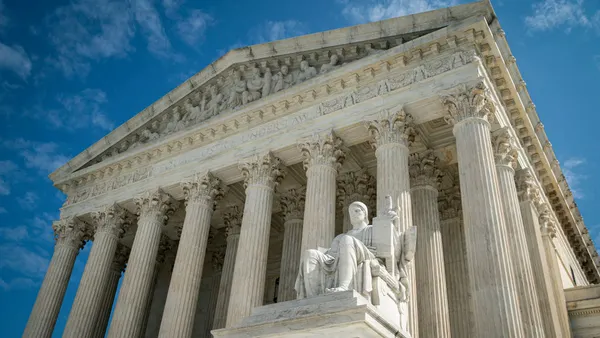Dive Brief:
- Microsoft's executive leadership team is responding to the contents of an employee email chain that included allegations of sexual harassment and discrimination at the company, a spokesperson confirmed to HR Dive in an email.
- The email chain consisted of more than 90 pages of emails, according to Quartz, and alleged misconduct included sexist comments and other stories, including one in which a woman was "told to sit on a coworker's lap in front of a human resources leader."
- Microsoft's chief people officer and executive vice president of HR, Kathleen Hogan, engaged directly on the email thread, the spokesperson said. According to a copy of Hogan's comments sent to HR Dive, she told employees leadership was "appalled and sad" to see the allegations. She added the company would develop sessions for its women's community groups for the purpose of receiving feedback. "While I do want to create a forum for the community on the thread, I also read and agree with the comments that for us to solve this as a company, the burden does not reside only with us women," Hogan said.
Dive Insight:
The allegations mark another setback for the tech industry and for Microsoft. The company dealt with revelations in a lawsuit last year including 238 internal complaints by female employees alleging gender discrimination or sexual harassment between 2010 and 2016. The suit sought collective action status but the plaintiffs' certification request was later denied by a federal judge (Moussouris, et al. v. Microsoft Corporation No. C15-1483JLR (W.D. Wash. July 6, 2018)). Prior to the judge's decision, Hogan sent a letter to employees detailing the company's investigation procedure.
As Microsoft deals with its own issues, its competitors are moving on from their own. Google, facing shareholder lawsuits and a global employee walkout, has agreed to eliminate the use of mandatory arbitration agreements for current and future employees. Uber resolved a group of employees' sexual harassment claims in an August 2018 settlement that totaled $1.8 million. But the steps taken by these companies has not assuaged all worker concerns; 40% percent of tech employees in a Blind survey said they experienced retaliation from HR or a manager after reporting a workplace incident.
Preventing sexual harassment isn't just about dry recitation of training procedures, EVERFI senior director of prevention education Elizabeth Bille recently told HR professionals. Training should seek to prevent social norms that would normally discourage intervention and incident reporting, Bille said, while HR should be collecting data on incident reports and investigations in order to improve. Senior leaders also have a part to play by talking about what the organization is doing to prevent harassment and what kind of workplace it aspires to create, she noted.
State and local governments have taken note and there are now several laws mandating sexual harassment training. New York City, for example, requires employers with 15 or more employees to offer sexual harassment training that covers bystander intervention practices. Employers may need to craft policies around more such initiatives moving forward.










